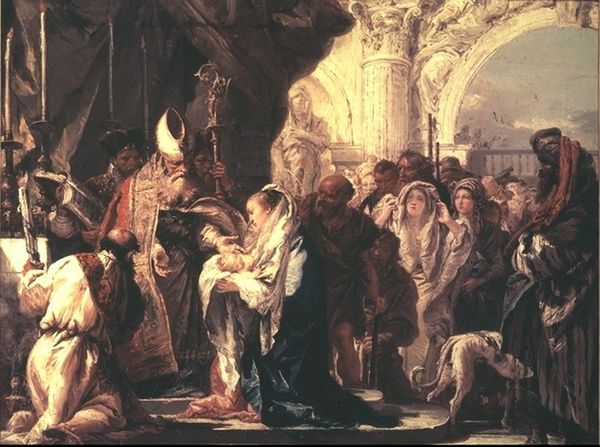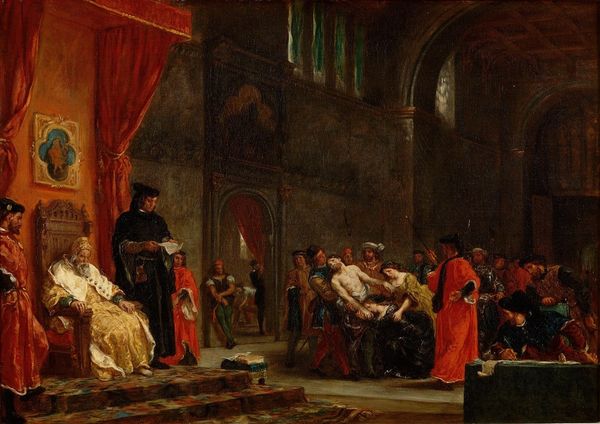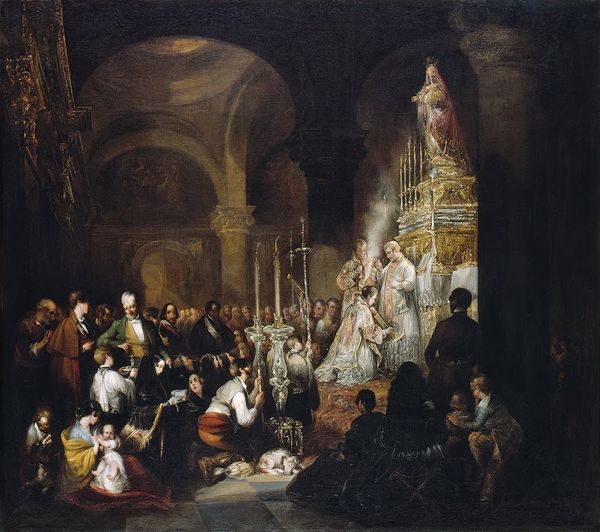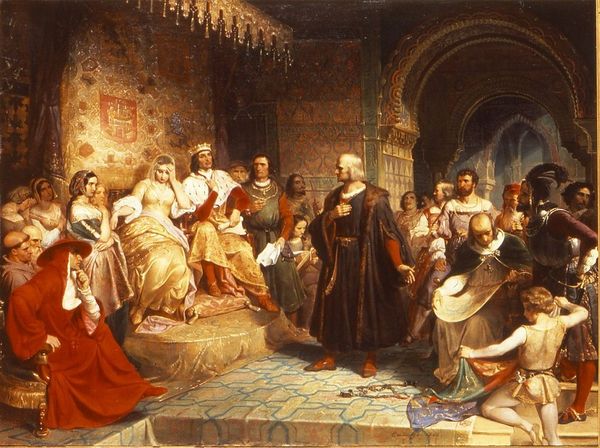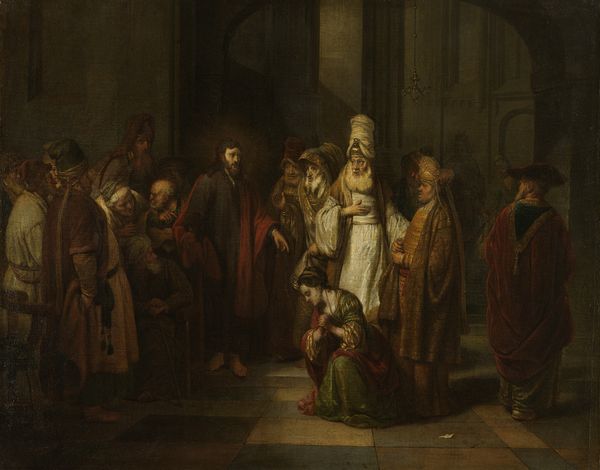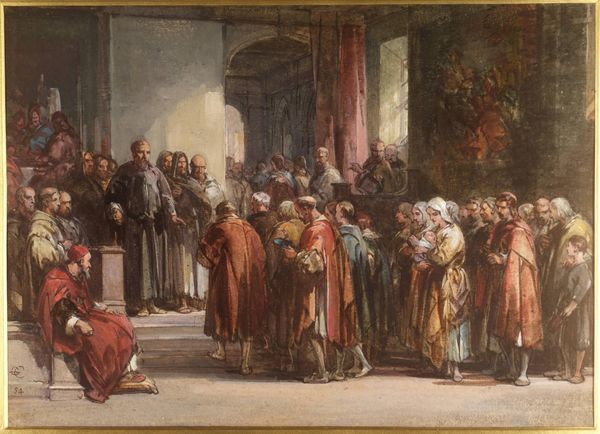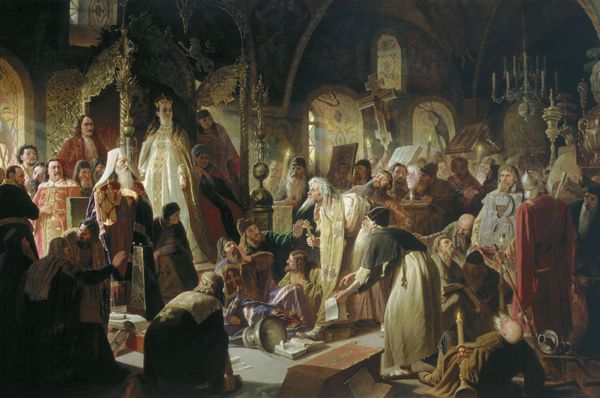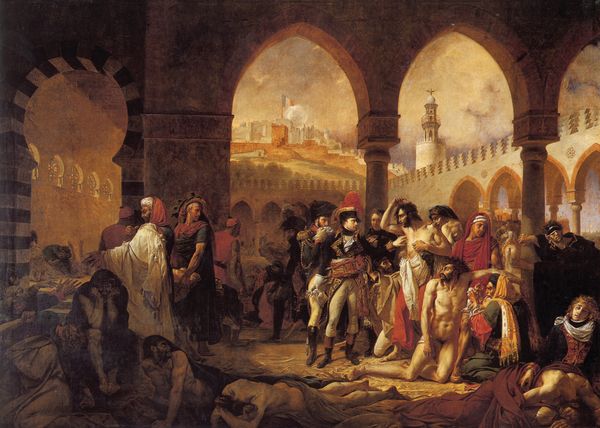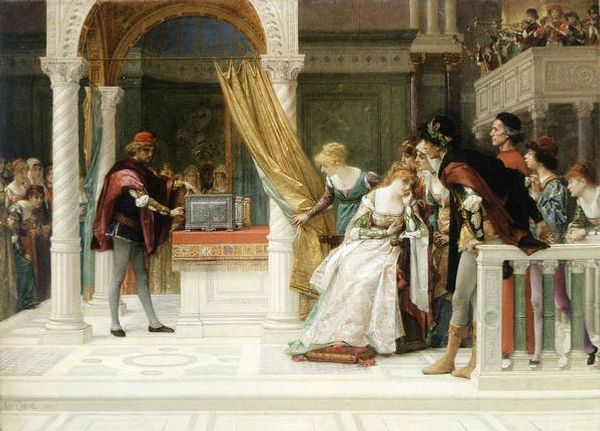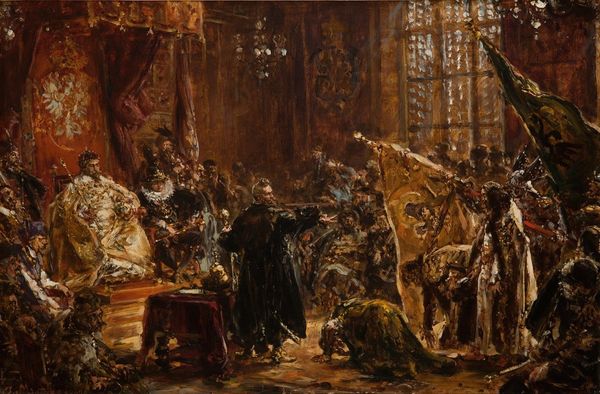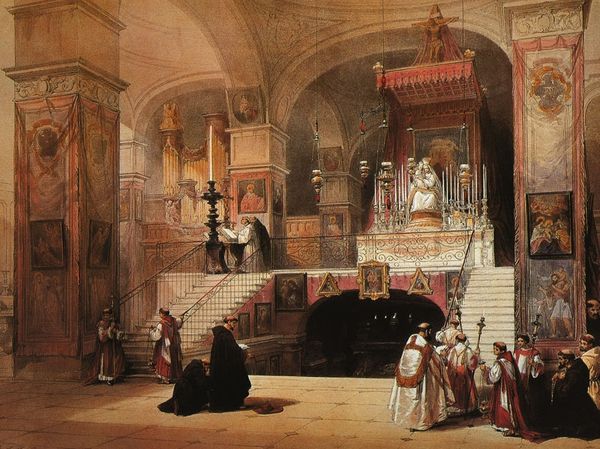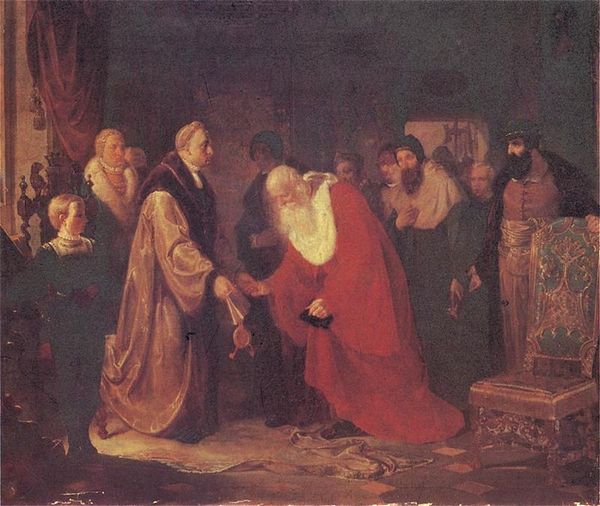
Dimensions: support: 406 x 559 mm frame: 687 x 827 x 65 mm
Copyright: CC-BY-NC-ND 4.0 DEED, Photo: Tate
Editor: This is Benjamin West's "Sketch for 'The Installation of the Order of the Garter'," currently residing at the Tate. The whole scene has such a serious, almost somber air to it. What symbols are at play here? Curator: Notice how the figures are arranged, almost like a stage tableau. West uses the architecture and the figures' poses to evoke a sense of history and tradition. Do you see how the light emphasizes the central figures? Editor: Yes, there's a clear visual hierarchy. The bishop in gold really stands out. Curator: That gold signifies spiritual authority, of course. The figures kneeling before him symbolize humility and allegiance to the Order, and the Order itself is a symbol of chivalry dating back centuries. West is consciously invoking that history. Editor: It’s fascinating how much meaning is packed into a single image. Thanks! Curator: Indeed. Visual symbols are powerful carriers of cultural memory.
Comments
tate 8 months ago
⋮
http://www.tate.org.uk/art/artworks/west-sketch-for-the-installation-of-the-order-of-the-garter-n00315
Join the conversation
Join millions of artists and users on Artera today and experience the ultimate creative platform.
tate 8 months ago
⋮
This is probably a finished sketch for a large oil painting which West produced in 1787 for the Audience Chamber at Windsor Castle. It was one of eight pictures recording events from the reign of King Edward III, who founded the Order of the Knights of the Garter in 1348. West painted them between 1786 and 1789. Here, he depicts the scene in St George's chapel, Windsor, when the Order was founded. The King and the Prince of Wales are kneeling on either side of the altar while Queen Pillippa is kneeling to the left. Gallery label, September 2004

